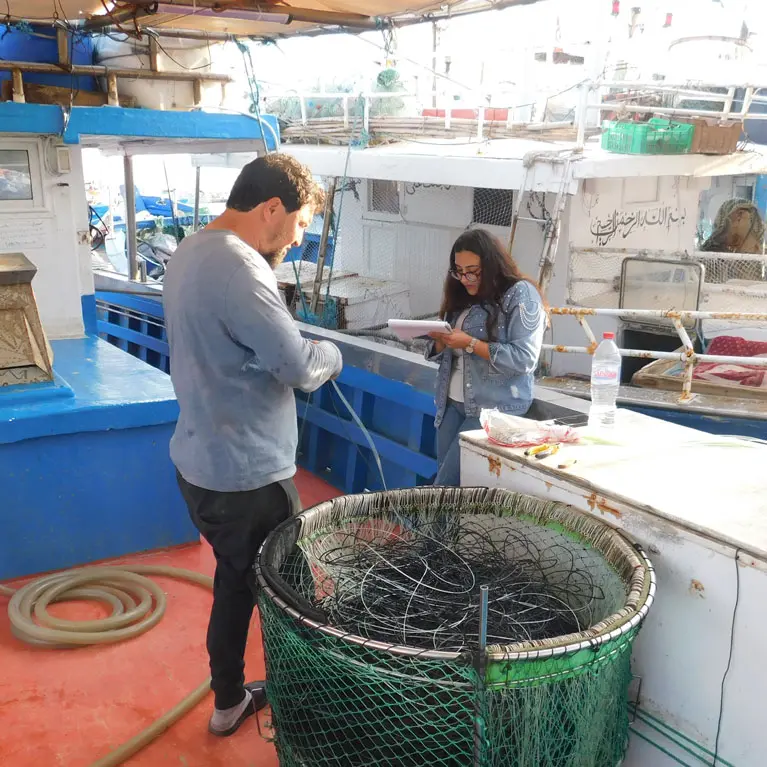Monitoring and managing bycatch of Tunisia’s shortfin mako sharks
The shortfin mako shark is one of the most sought-after species in the Mediterranean and is Critically Endangered in the region because of the demand for its valuable fins and meat. Ichrak is mapping where and when shortfin makos move around Tunisia’s Gulf of Hammamet. By combining this information with her studies of local fishing practices, she hopes to form a baseline picture of where these sharks are interacting most with fisheries and being accidentally caught in gear designed for target species like swordfish. Curbing bycatch is key to stemming the retention of these sharks for the lucrative trade in their products.
Currently a doctoral researcher in marine biology at the Faculty of Sciences of Sfax and the INSTM, I earned a Bachelor’s degree in life and environmental sciences in 2018, followed by a Master’s in biodiversity of organisms, populations and the environment in 2020. My academic path reflects my passion for nature and marine ecosystems, driven by concerns about threats to the marine environment.
I come from Sidi Bouzid in Tunisia. Despite the town’s distance from the coast, my fascination for the sea flourished through reading, watching documentaries and making occasional visits to the seashore. This bond ignited...
Mako Shark bycatch in Tunisian coasts (GSA 13, Central Mediterranean Sea): status and management options
The primary objective of this project is to monitor the bycatch of the shortfin mako shark in the Gulf of Hammamet. This monitoring aims to develop management options to ensure the conservation of this endangered species.
The shortfin mako shark is Critically Endangered in the Mediterranean Sea, so reducing bycatch of the species will support the sustainability of this population. Improving our understanding of the dynamic between shortfin mako sharks and the fishing industry will enable us to develop suitable management strategies that will minimise bycatch of the species.
Shark populations have shown significant declines in the Mediterranean and more than 50% of its species are threatened with extinction. However, many are still caught, either accidentally or deliberately, and sold in markets. In Tunisia’s Gulf of Hammamet, elasmobranchs are frequently caught accidentally, especially during their spring and summer migrations. Fishing gear designed for other species, such as swordfish, often unintentionally captures the shortfin mako Isurus oxyrinchus, a highly migratory species, and the shark is often retained for its valuable meat and fins. After the blue shark, the shortfin mako is the second-most caught pelagic shark in the Mediterranean. The bycatch of this species has serious consequences for marine biodiversity in the region. Unfortunately, efforts to mitigate these impacts are hindered because no precise data about either the mako’s spatio-temporal distribution or about fishing activities are available.
This project aims to fill these knowledge gaps by collecting detailed data and identifying key areas. Field work will comprise observing fishing methods and the different types of gear at sea to better understand how they impact mako sharks, which will help to develop effective conservation strategies to reduce bycatch. Raising awareness among local fishermen about the behaviour of this species and promoting responsible fishing practices are also crucial to aligning fishing with conservation goals.
- To study local fishing practices, including gear specifications and details of fishing activity and effort.
- To map the spatio-temporal distribution of mako sharks.
- To develop and propose measures that will reduce bycatch, such as the depth and time gear is deployed and its immersion time, to minimise the impact of fishing on mako sharks.
- To raise awareness among fishermen and local communities about elasmobranch conservation and to promote sustainable fishing practices.


